Path of Exile — Fazit: Wie gut ist die deutsche Übersetzung?
Path of Exile: Auf Deutsch so gut wie auf Englisch?
Immer schon mal Lust auf Path of Exile gehabt — aber nicht auf englische Texte? Dieses Hindernis hat der Entwickler mit Version 3.0.2 eingerissen, das erstklassige Action-Rollenspiel gibt es jetzt auch auf Deutsch. Wir haben reingespielt und prüfen, ob die Übersetzung gelungen ist.
Wo stelle ich die Sprache um?
Path of Exile hat keine Sprachoption in den Steam-Einstellungen, dazu müsst ihr das Spielmenü bemühen. Im Reiter «UI» könnt ihr die Sprache auswählen.
Was wurde übersetzt?
Alle Texte von Path of Exile, inklusive Menüs und Dialoge, sind nun auf Deutsch. Eine deutsche Vertonung gibt es allerdings nicht: Alle Charaktere sprechen weiterhin Englisch wie in der Originalfassung. Allerdings machen Dialoge auch nur einen kleinen Teil der Spielzeit aus — viel wichtiger sind Menüs, Fähigkeiten und Itembeschreibungen.
Wie stimmig ist die Übersetzung?
Das erste Vorzeichen ist nicht ideal: «Du müsst Path of Exile neu starten», verkündet uns das Spiel, als wir es erstmals auf Deutsch stellen. Aber wer danach Tippfehler an jeder Ecke befürchtet, kann beruhigt sein. Das Spiel leistet sich selten wirklich gravierende Patzer und wir sind auf keine Fehler wie komplett unübersetzte Texte gestoßen. Viele der Story-Gespräche lesen sich auf Deutsch sogar sehr stimmungsvoll!
Gelegentlich stolpern wir über Fehler und Sinnverzerrungen.
Aber die Übersetzung wirkt doch immer wieder etwas holprig und ungelenk. Etwa, wenn sie aus der englischen Redewendung «left to their own devices» («sich selbst überlassen») viel zu wörtlich «mit all ihren Apparaturen» macht. Weil «devices» für sich genommen eben Apparaturen sind. An anderer Stelle wundern wir uns über Wörter, die vielleicht nicht falsch, aber zumindest ungewöhnlich sind. Aus den «Gems», die unsere Fähigkeiten befeuern, werden etwa nicht wie in Diablo Edelsteine, sondern «Gemmen». Klar, kann man auch sagen — muss man aber nicht.
Klar, kann man auch sagen — muss man aber nicht.
Lässt sich die deutsche Version gut spielen?
Wer über solche Unstimmigkeiten hinwegsehen kann, wird mit dem deutschen Path of Exile aber gut zurechtkommen. Die komplexen Items und Fähigkeiten sind allesamt verständlich. Die Menüs schneiden nichts ab oder verfallen in absurde Abkürzungen wie seinerzeit Oblivion. Nur etwas größere und damit leicht unübersichtlichere Textboxen müssen wir in Kauf nehmen — Deutsch ist eben keine Sprache, die für ihre knappe Effizienz bekannt ist.
Auf Deutsch nehmen diese beiden Textfenster fast die komplette Bildschirmbreite ein.
Die englische Fassung kommt mit weniger Platz aus.
Aber wer das Spiel bislang ignoriert, weil er seine komplexen Spielmechaniken lieber auf Deutsch verstehen möchte, der kann nun bedenkenlos zugreifen. Die Entwickler haben bereits um Feedback zur Übersetzung gebeten und merzen die verbliebenen Schnitzer hoffentlich noch aus.
9:56
Path of Exile — Test-Video zum Free2Play-Diablo
Path of Exile — The Fall of Oriath ansehen
Hack and Slay – Wikipedia
Hack and Slay [ˌhæk‿ən‿ˈsleɪ] (von engl. to hack für dt. hacken und to slay für erschlagen) oder auch Hack and Slash (to slash für aufschlitzen, zerfetzen) ist ein aus dem Rollenspiel stammender Begriff, der sich auf eine Spielweise oder ein Spielsystem bezieht, in dem der Aspekt des Kampfes stark ausgeprägt ist und gegenüber dem eigentlichen Spiel einer Charakterrolle im Vordergrund steht.[1]
Entstanden ist die Bezeichnung aus Pen-&-Paper-Rollenspielen, in denen zum Teil in den Abenteuerbänden wenig Rollenspiel im eigentlichen Sinne stattfand, sondern zunehmend Monsterschlachten ausgefochten wurden, der Stufenaufstieg also vorwiegend über das erfolgreiche Erschlagen der Gegner erfolgte.[2] Im LARP gibt es zwar ebenfalls Kampfhandlungen, doch steht bei dieser Art des Rollenspiels die Verkörperung des zu spielenden Charakters im Vordergrund.
Das Kartenspiel Munchkin ist eine Persiflage auf das Hack-and-Slay-Rollenspiel.
Inhaltsverzeichnis
- 1 Videospiele
- 2 Literatur
- 3 Einzelnachweise
- 4 Weblinks
Heute wird der Begriff vor allem in Bezug auf Action-Rollenspiele, teilweise auch Action-Adventures, für PC oder Spielekonsolen verwendet, um die zentrale Spielmechanik zu beschrieben. Bei Hack-and-Slay-Videospielen ist die Aufgabe des Spielers primär, Ungeheuer mit diversen Waffen oder Zaubern zu erlegen, um an Beute zu gelangen oder Quests zu erfüllen. Die Hintergrundgeschichte und Entwicklung der Charaktere ist dabei, im Gegensatz zum klassischen Rollenspiel oder Adventure, nachrangig. Teilweise wird der Begriff auch synonym zum Action-Rollenspiel verwendet, obwohl es lediglich ein Subgenre darstellt.[3]
Bekannte Vertreter des Hack-and-Slay-Genres sind:
- Ultima (ab 1981)
- Gauntlet (1985)
- Sword of Sodan (1988)[4]
- Diablo (1996)
- Devil May Cry (Capcom, 2001)[5]
- Dungeon Siege (2002)
- Sacred (2004)
- Titan Quest (2006)
- Drakensang Online (2008)
- Torchlight (2009)
- Path of Exile (2013)
- Grim Dawn (2016)
- Lost Ark (2020)
- Wolcen (2020)
- Last Epoch (2021)
- Sara Tulloch, The Oxford Dictionary of New Words: A Popular Guide to Words in the News, Oxford University Press (1991): hack-and-slay, S.
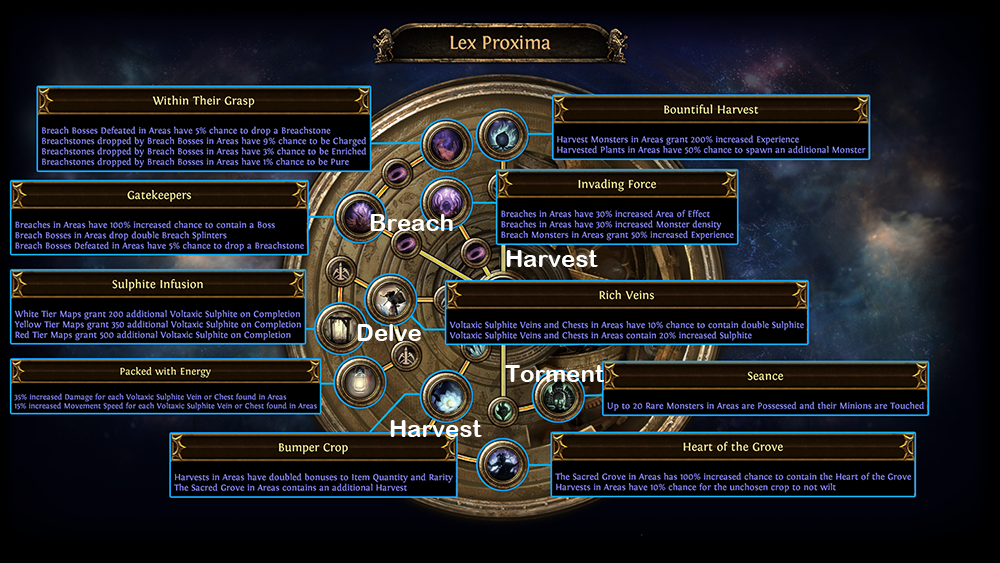 145.
145.
- ↑ Sara Tulloch: The Oxford Dictionary of New Words – A Popular Guide to Words in the News. Oxford University Press, USA 1993 (englisch): “hack-and-slash: adjectival phrase, also written hack’n’slash, of entertainment, especially role-playing and computer games having combat and violence as its central theme, rather than logical thinking or problem-solving.”
- ↑ Dominique Jagusch: Autorenschaft in virtuellen Gemeinschaften — Die Strukturierung des Narrationsprozesses in MUDs (Multi-User Dungeons) (Memento vom 15. Februar 2010 im Internet Archive) (PDF-Datei, 541 KB, Referenz auf Seite 17)
- ↑ Mathias Oertel: Test: Titan Quest. mit Ausführungen zu Hack-&-Slay-Computerspielen. In: 4Players. 30. Juni 2006, abgerufen am 20. August 2022: „Gibt es Erklärungsbedarf, wenn der Begriff Hack & Slay fällt? Das frei übersetzte Metzeln & Töten ist eine transparente Metapher für das Genre des Action-Rollenspiels, wobei der RPG-Aspekt meist nur darin besteht, dass eure Spielfigur über Eigenschaftswerte und Fähigkeiten verfügt, die über Erfahrungspunkte und den daraus resultierenden Stufenaufstieg verbessert werden.
 “
“
- ↑ Lars Konzack: Denmark. In: Mark J. P. Wolf (Hrsg.): Encyclopedia of Video Games: The Culture, Technology, and Art of Gaming. 2. Auflage. Greenwood, ABC-CLIO, 2021, ISBN 978-1-4408-7019-4, S. 254 (englisch): “and developed the hack-and-slash game Sword of Sodan (1988), selling more than fifty-five thousand copies.”
- ↑ Simon Ferrari: Capcom. In: Mark J. P. Wolf (Hrsg.): Encyclopedia of Video Games: The Culture, Technology, and Art of Gaming. 2. Auflage. Greenwood, ABC-CLIO, 2021, ISBN 978-1-4408-7019-4, S. 140 (englisch): “hack-and-slash games (the Devil May Cry series)”
- Liste mit 100 Hack and Slay Spielen auf Hack-and-Slay.de, abgerufen am 19. Februar 2020
Exile operation. The route of memory was laid from Murmansk to Vardø | SOCIETY: History | SOCIETY
It would seem that 75 years have passed, but there are still many white spots on the map of the Petsamo-Kirkenes operation. And even the very name of the festive events causes controversy between politicians and historians.
And even the very name of the festive events causes controversy between politicians and historians.
What was it — the defeat of the Nazi troops or the liberation of the Soviet Arctic and Eastern Finnmark? One thing is clear, behind every kilometer of the way is someone’s human life.
Return the name of the hero
Our memory route began with the laying of wreaths at the memorial to Soviet soldiers and Norwegian patriots in Mesopotamia, where the reconnaissance center of the Northern Fleet operated during the Great Patriotic War: Norwegian partisans were trained there and the wounded were treated.
“There was a hospital here, where many Red Navy soldiers, infantrymen, pilots, and sailors were being treated. But, unfortunately, some could not overcome the disease, so there is a cemetery nearby. And two monuments were erected,” said the Chairman of the Council of the non-profit fund for supporting employees and pensioners of the FSB “Shield”, a retired major general, an honorary citizen of the Murmansk region Gennady Gurylev.
The next stop is in the Valley of Glory. On the memorial to the defenders of the Soviet Arctic are hundreds of names of those about whom they write in funerals «died on the battlefield.» Anna Barakova came here from Naryan-Mar, her great-grandfather, Red Army soldier Pavel Alekseevich TYUSOV, died here. He is on the list, we found his last name, however, it is misspelled — TYUSKOV P.A. «AiF on Murman» expects that this inaccuracy must be corrected. The hero certainly needs to return the surname.
Anna Barakova came to the Valley of Glory from Naryan-Mar, where her great-grandfather, Red Army soldier Pavel Alekseevich TYUSOV, died. He is on the list, we found his last name, however, it is misspelled — TYUSKOV P.A. in Ahmalahti on our bank of the Pasvik river. Here are buried Soviet soldiers who did not return from the battle near Neiden (Norway).
“All the dead were collected and buried on Soviet soil, no one wanted to leave their comrades on the battlefield. The soldiers specially undertook campaigns to return the bodies of the dead. We must remember this. We stand here to salute the 611 soldiers who died on the Norwegian side. And those who survived also suffered greatly, many died from their wounds after the war, ”said the Secretary General of the Norwegian Association of Military Veterans Torgeer Lewald (Oslo).
The soldiers specially undertook campaigns to return the bodies of the dead. We must remember this. We stand here to salute the 611 soldiers who died on the Norwegian side. And those who survived also suffered greatly, many died from their wounds after the war, ”said the Secretary General of the Norwegian Association of Military Veterans Torgeer Lewald (Oslo).
The battle of Neiden on October 27, 1944 was the last battle in the Petsamo-Kirkenes offensive.
“The locals could not hold back their tears when they told me how one soldier called his mother in German before his death: “Mutti, mutti!” — and next to him another, also stabbed with a bayonet, called out in Russian «Mama, Mama!»
“Fierce battles broke out in Neiden: with bayonets, one on one, with dramatic scenes of dying German-Austrian and Soviet soldiers left lying on the battlefield mixed with each other. The locals could not hold back their tears when they told me how one soldier called his mother in German before his death: “Mutti, mutti!” — and next to him another, also stabbed with a bayonet, called out in Russian «Mama, Mama!» — said museologist, member of the Norwegian Museum Association, candidate of political science Valing Gorter .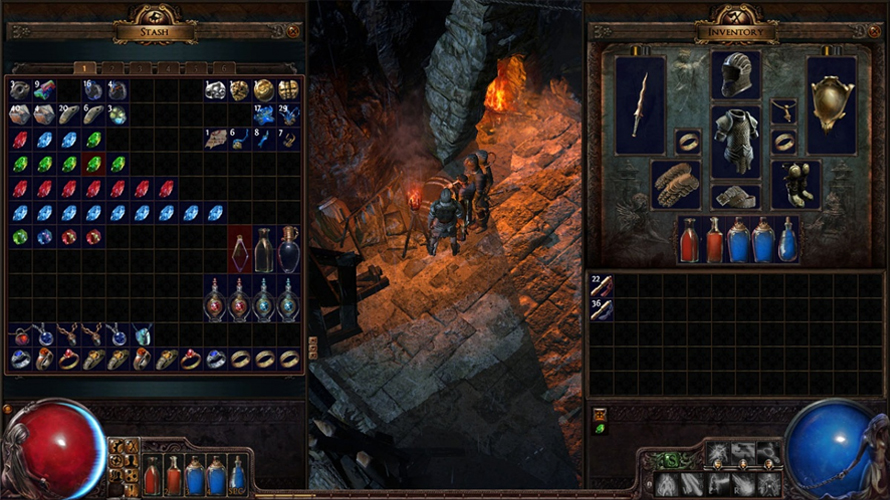 — On November 1, the operation was officially completed, in honor of which a salute from hundreds of guns thundered on Red Square in Moscow. Three brigades (approximately three thousand men each) of the 126th Army Corps that fought in Neiden returned to the Soviet Union via the pontoon bridge at Akhmalakhti. 611 dead, along with 1,501 wounded and missing, account for about 10% of the total losses of the entire October offensive.
— On November 1, the operation was officially completed, in honor of which a salute from hundreds of guns thundered on Red Square in Moscow. Three brigades (approximately three thousand men each) of the 126th Army Corps that fought in Neiden returned to the Soviet Union via the pontoon bridge at Akhmalakhti. 611 dead, along with 1,501 wounded and missing, account for about 10% of the total losses of the entire October offensive.
These brigades have never been to Norwegian Kirkenes. This is where the drama unfolded. And we lay flowers at the monument at the place of execution of Norwegian patriots. During the occupation, people from the cities of Berlevog and Vardø helped the Norwegian partisans in their work to obtain information about the activities of German troops on the coast of Finnmark.
“The Nazis combed the area from North Tromsø to Sør-Varanger along the coast, many partisans and informers were arrested, shot without any trial. 11 people were sentenced to death. Many of their families and relatives were convicted and sent to concentration camps in Germany. The sentence was to be carried out on the mountain, they were brought, and the Germans mocked them in every possible way, one officer especially distinguished himself. They were forced to dig their own grave, and then one of the convicts hit a German officer with a shovel — he fell and died. As a punishment, the Germans decided not to shoot them: they were all bludgeoned with wooden clubs,” said a Norwegian historian Steinor Borch Jensen . — For a long time after the war, this was kept secret, until one of the participants in the execution was found in Germany. He showed where they buried the executed, the bodies were exhumed, and it turned out that not a single person had been shot. In summer, you can still see a brown patch of land where the grave used to be. The remains were taken to Berlevog and Vardø, where they were buried.”
Many of their families and relatives were convicted and sent to concentration camps in Germany. The sentence was to be carried out on the mountain, they were brought, and the Germans mocked them in every possible way, one officer especially distinguished himself. They were forced to dig their own grave, and then one of the convicts hit a German officer with a shovel — he fell and died. As a punishment, the Germans decided not to shoot them: they were all bludgeoned with wooden clubs,” said a Norwegian historian Steinor Borch Jensen . — For a long time after the war, this was kept secret, until one of the participants in the execution was found in Germany. He showed where they buried the executed, the bodies were exhumed, and it turned out that not a single person had been shot. In summer, you can still see a brown patch of land where the grave used to be. The remains were taken to Berlevog and Vardø, where they were buried.”
I’m ashamed to say
For many years the Norwegians did not have a single point of view in understanding the last war winter in Finnmark.
«There has always been doubt, skepticism and anxiety about the Soviet Union in some circles in Norway, but the liberation of Finnmark has marginalized the most vocal Russophobes in Norwegian politics.»
“On the one hand, there is an interpretation that comes from Norwegian defense and security circles: the Soviet Union has always been one of the enemies of Norway, and the alliance during the World War was an exception to the rule. According to this interpretation, of course, it is good that the Soviet troops liberated East Finnmark, but it was a matter of great concern that they were. The liberation by the Soviet troops was interpreted as a precondition for the Norwegian forces to be able to return and wage war against the Germans again. This is the basis of the national narrative, it was the only one for a long time and was not disputed until 1980s, — said doctoral student of the Arctic University of Norway Juakim Markussen. — On the other hand, mainly in Northern Norway, there is a more local and competing opinion.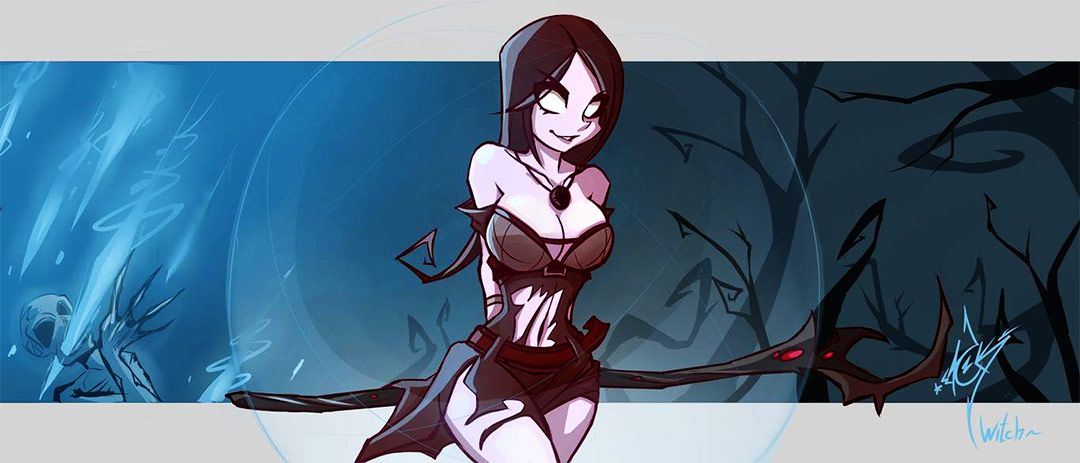 Soviet soldiers are great heroes, they helped the disadvantaged population after the Germans retreated and defeated the entire province. It is important that the Norwegian authorities failed to help the population of Finnmark. And those few hundred Norwegian soldiers who first arrived in East Finnmark were arrogant towards the locals. There has always been doubt, skepticism and anxiety about the Soviet Union in some circles in Norway, but the liberation of Finnmark has marginalized the most vocal Russophobes in Norwegian politics.”
Soviet soldiers are great heroes, they helped the disadvantaged population after the Germans retreated and defeated the entire province. It is important that the Norwegian authorities failed to help the population of Finnmark. And those few hundred Norwegian soldiers who first arrived in East Finnmark were arrogant towards the locals. There has always been doubt, skepticism and anxiety about the Soviet Union in some circles in Norway, but the liberation of Finnmark has marginalized the most vocal Russophobes in Norwegian politics.”
For many years after the war, the inhabitants of Finnmark hushed up the second version, and only in the early 80s, the Norwegian idea of war and occupation was no longer so black and white.
“With the beginning of the Cold War, the Russians officially ceased to be our friends and all those who sympathized with them fell under police surveillance: their phones were tapped, the partisans could not get a job, they had problems in Norwegian society. This went on from 1945 to 1990,” said the great-grandson of partisan Thrun Erickson . – I am proud of the history of my family, my grandfather: he was a great partisan and a great hero. In my opinion, the Norwegian government and society need to do something to recognize them as participants in the war, veterans, so that they receive well-deserved awards. After all, there is no special award for the Norwegian partisans. Many of them received a special sign of participation in World War II, like all other Norwegians. The attitude towards them was bad, instead of awards and pensions, the partisans were under surveillance for decades. My grandfather was awarded two Soviet awards — the Order of the Red Banner and the Order of the Red Star, he was very proud of them, they hung in a special frame on the wall in our house. I think other people should be proud of this story too, but they just don’t know what happened in northern Norway.»
This went on from 1945 to 1990,” said the great-grandson of partisan Thrun Erickson . – I am proud of the history of my family, my grandfather: he was a great partisan and a great hero. In my opinion, the Norwegian government and society need to do something to recognize them as participants in the war, veterans, so that they receive well-deserved awards. After all, there is no special award for the Norwegian partisans. Many of them received a special sign of participation in World War II, like all other Norwegians. The attitude towards them was bad, instead of awards and pensions, the partisans were under surveillance for decades. My grandfather was awarded two Soviet awards — the Order of the Red Banner and the Order of the Red Star, he was very proud of them, they hung in a special frame on the wall in our house. I think other people should be proud of this story too, but they just don’t know what happened in northern Norway.»
According to Norwegians, the story of liberation from fascism is still unknown in the south of the country.
«With the beginning of the Cold War, the Russians officially ceased to be our friends and all those who sympathized with them fell under police surveillance.»
“In the north of Norway, people have experienced a lot of suffering, and I knew almost nothing about it. In the south, they do not know about the actions of the Norwegian partisans, who were trained on the Kola Peninsula, in Lavna, confirms Torgeer Lewald. — Many people know about the suffering of the Soviet people, but what happened in Finnmark defies my understanding. When I found out about this, I put on the St. George ribbon — this shows that I am very proud and admire what they have done. I was asked what it is. I answered: the ribbon is a symbol of the bravery and courage of the soldiers. The Soviet people brought the civilized world to East Finnmark. I never cried until I was forty, but I am not ashamed to admit: when I visited the battlefields, I had tears in my eyes.
Defeat of propaganda
So how can we still call this offensive operation in October 1944 — defeat or liberation?
“There was no rout! The Arctic Stalingrad was planned here. If we carefully look at the maps of the Petsamo-Kirkenes operation, we will see the attempts that the Soviet troops made to encircle the group on the Kola Peninsula and in Finnmark. But the environment didn’t work. In my opinion, it is correct to speak of liberation. Lothar Rendulich, who commanded the Nazi group, withdrew all the troops and received the Iron Cross for the evacuation. For the «defeat» such an award is not received! — convinced the history teacher of gymnasium No. 3 from Arkhangelsk Mikhail Kopitsa . — The mountain army was transferred to the Alps, where it fought against the Americans. Today we have a certain concept, a narrative that fits into the framework of Soviet historiography — the so-called 10 Stalinist blows. It was impossible to admit that the 10th strike had failed.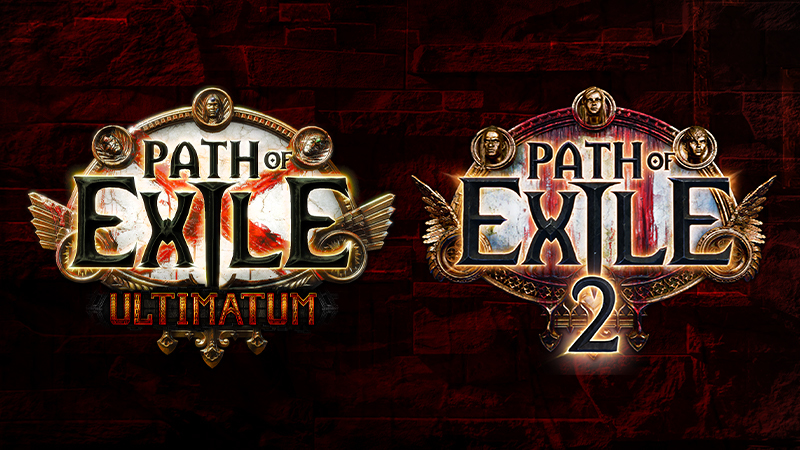 Although they did not always achieve enormous goals, they nevertheless led to liberation and victory.
Although they did not always achieve enormous goals, they nevertheless led to liberation and victory.
If we carefully look at the maps of the Petsamo-Kirkenes operation, we will see the attempts that the Soviet troops made to encircle the group on the Kola Peninsula and in Finnmark. But the environment didn’t work. Photo: AiF on Murman / Aleksandra Mikhova
Scientists are united in this understanding of history.
“We took three Stalinist orders for the liberation of the Soviet Arctic and Northern Norway. And three thanks, which, according to each order, were issued to soldiers and officers who distinguished themselves in these battles. They were printed when I. Stalin was awarded the title of Generalissimo, that is, after June 26, 1945. The order was issued simultaneously with the liberation of certain cities. And here is the difference. In the Petsamo-Kirkenes operation, we captured the city of Petsamo (then it was Finnish territory), then we captured the city of Kirkenes (Norway), and the third order was issued on November 1, where it was said about the liberation of the entire Petsamo region, which had already become ours. And in the orders that were issued to soldiers and officers, it is already said about the defeat of the Nazi troops. In the newspapers of that time, our commissars speak of the Petsam operation as a defeat, the storming of Kirkenes, the heavy battles fought by our soldiers — this is all propaganda, — the head of the department of national history of the Northern Arctic Federal University named after M.V. Lomonosov, professor, doctor of science n. Mikhail Suprun . — At the conference, the lieutenant colonel of the Norwegian army said that it was «squeezing out» and advancing the Soviet troops after the retreating Germans. There were no serious battles, 611 people died in Norway — this is not so much. For example, when we talk about the liberation of Poland, there are 400-600 thousand dead there.”
And in the orders that were issued to soldiers and officers, it is already said about the defeat of the Nazi troops. In the newspapers of that time, our commissars speak of the Petsam operation as a defeat, the storming of Kirkenes, the heavy battles fought by our soldiers — this is all propaganda, — the head of the department of national history of the Northern Arctic Federal University named after M.V. Lomonosov, professor, doctor of science n. Mikhail Suprun . — At the conference, the lieutenant colonel of the Norwegian army said that it was «squeezing out» and advancing the Soviet troops after the retreating Germans. There were no serious battles, 611 people died in Norway — this is not so much. For example, when we talk about the liberation of Poland, there are 400-600 thousand dead there.”
The game of war
The generation of veterans is leaving, many of today’s schoolchildren have never looked into their eyes. How can children be taught the history of World War II? This question seems simple at first glance.
“Modern schoolchildren are interested in history to the extent that it is taught to them. If this is propaganda noise, “pseudo-patriotism”, which is perceived as a background, this is one story, but if you talk to them, then the war does not leave you indifferent,” says Mikhail Kopitsa. — I tell human stories, I talk about war from the point of view of victims, people who had to endure what can be felt. For example, the story of the family of the Norwegian partisan Lu, when the head of the family was shot, and his wife and children were sent to a concentration camp. A woman, in order not to go crazy and preserve her memory, embroidered the names of loved ones, children, and places she had been on a blanket.
Today a board game about the Petsamo-Kirkenes operation was invented for schoolchildren. Just like 75 years ago, the players become the leaders of divisions that break through the fortifications of the German and Austrian troops to Kirkenes. On the playing field there are symbols that show the complexity of the territory, the number of fortifications, enemy troops in each particular sector. Players, based on the cards that fall into their hands, must overcome all obstacles.
Players, based on the cards that fall into their hands, must overcome all obstacles.
“I have been creating educational games for 10 years. The idea of gamification is ancient, prehistoric. Today we have the opportunity to tell people about the events of the past with the help of different games — board games, role-playing games, live action games. This brings people closer to the events that took place many years ago. There is such a profession — to train people. Education is impossible without self-interest. Fortunately, the game is more engaging and interesting than all traditional education formats put together,” a history teacher at the Higher School of Economics Lyceum in Moscow told AiF Vasily Kuznetsov. – It is imperative to correlate and perceive the places where people live with historical events. It is necessary that schoolchildren be engaged in local history, study the history of their own families, and in our country history has been hushed up for generations.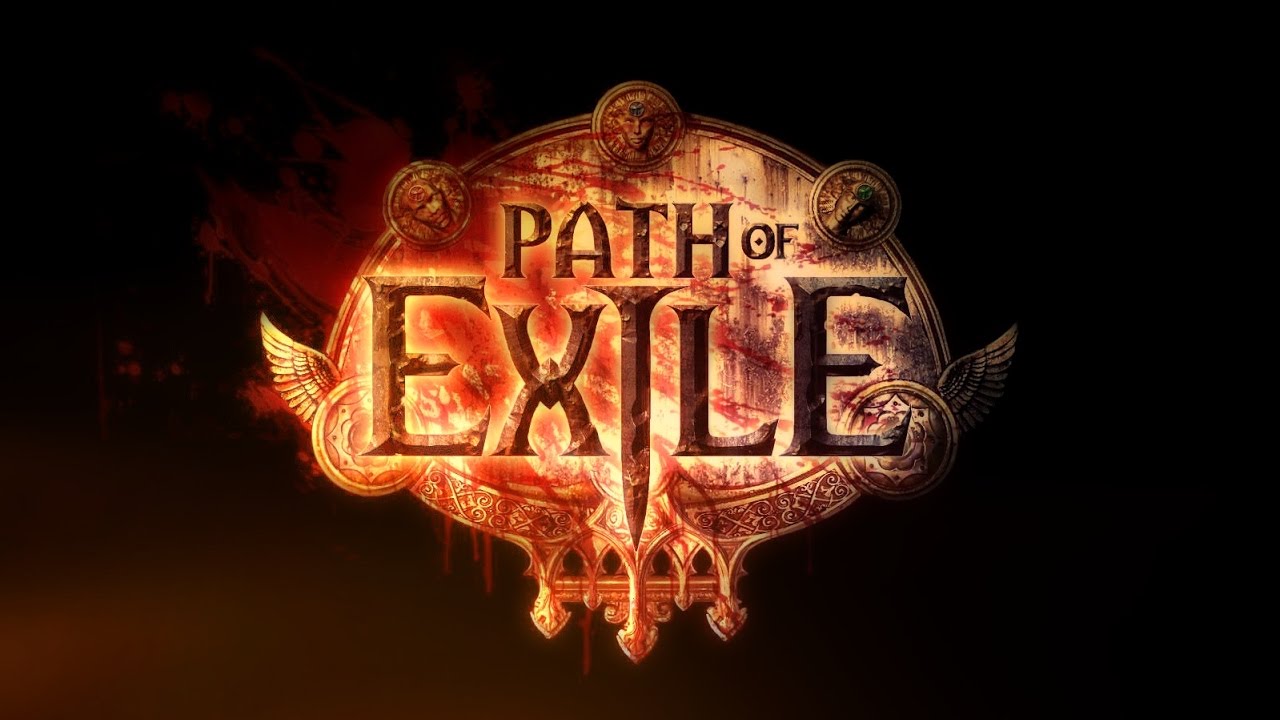 We are embarrassed that our ancestors served in the tsarist army or in the NKVD. Instead of telling our children honestly about this, we keep silent, but we need to dig into it, inflict mental wounds on ourselves, but become healthier through suffering.”
We are embarrassed that our ancestors served in the tsarist army or in the NKVD. Instead of telling our children honestly about this, we keep silent, but we need to dig into it, inflict mental wounds on ourselves, but become healthier through suffering.”
________________________________________________________________
We would like to thank the community of journalists Barents Press for their assistance in preparing the material.
Diary of Exile (10/10) | “I built a meaningful life in Belgrade”
Marina considered leaving Russia in 2020, convinced that the situation was getting worse. Forced by Russia’s invasion of Ukraine, she traveled to Belgrade, where she gradually created a small community of exiles who, like her, wanted to build a new life based on respect and tolerance.
Marina (translation by Alyon Dubrovin)
© CdB / Bruno Tolić
This text is also available in German, French and Serbian.
The war in Ukraine sent millions of people into exile. Some Ukrainians, as well as Russians and Belarusians, fleeing the Moscow regime, have taken refuge in Serbia, where their community is being formed. What do they think of the situation? How do they survive exile and departure, for some irrevocable? These are their views superimposed on each other.
Some Ukrainians, as well as Russians and Belarusians, fleeing the Moscow regime, have taken refuge in Serbia, where their community is being formed. What do they think of the situation? How do they survive exile and departure, for some irrevocable? These are their views superimposed on each other.
My name is Marina. I moved to Belgrade 8 months ago and since then I feel at home in this city. My background is in linguistics, customer service and tourism. More than anything, I love to travel to unusual corners of the world, so at some point this hobby became my profession. I have already been to 45 countries, often very exotic, and I love sharing my knowledge and travel experience with other people. I have worked in tourism for a long time in various roles — from a sales assistant to a product manager — and even led tourist groups on my author’s routes in India and Myanmar.
I never liked living in Russia, and I always wanted to go somewhere where the winter is milder, people are more smiling, and people are treated with respect by default. The whole of 2020 was extremely nervous: the dissolution of parliament, the pandemic, the nullification of the Constitution, the case of Ivan Golunov, the new absurd laws printed by the “mad printer” (as our parliament was called for its fertility), fake elections in the regions, the construction of a sovereign Internet, the poisoning of Navalny. ..
The whole of 2020 was extremely nervous: the dissolution of parliament, the pandemic, the nullification of the Constitution, the case of Ivan Golunov, the new absurd laws printed by the “mad printer” (as our parliament was called for its fertility), fake elections in the regions, the construction of a sovereign Internet, the poisoning of Navalny. ..
The country was shaking, the situation was gradually heating up. It was in that year that I began to pay attention to how much the degree of absurdity had risen. The Overton window expanded. Laws were adopted that were impossible to think of just 3-4 years ago. However, I seem to have been the only one in my social circle who periodically raised a panic about this. I remember that we discussed whether it is possible to disconnect Russia from the banking systems, and very smart people agreed that this is impossible, because. there will be too many dissatisfied, and the authorities will be afraid of protests. My friends were like frogs in a pot on fire, not noticing how soon they were cooked.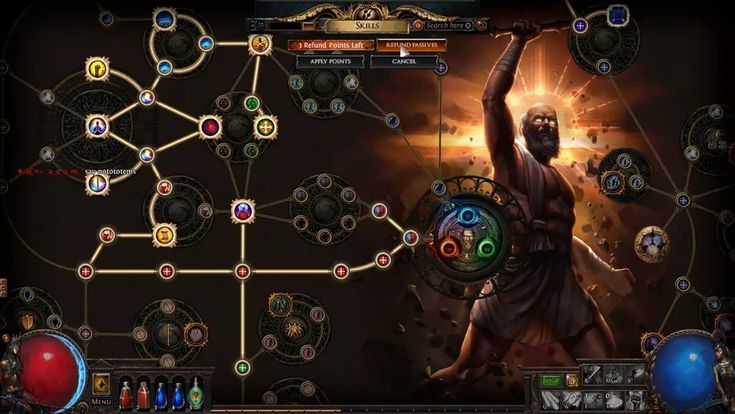
In January 2021, Navalny was tried at the police station. The impudence with which the authorities did not hesitate to do this struck me. This was the very moment when it became obvious that they were not afraid of anything. I realized that they have no real counterweight. And that meant things were only going to get worse. I saw that the process is irreversible, and the police state in Russia is just a matter of time.
I was then in a civil marriage without children (we were just about to have them). My partner and I had a tough conversation. I insisted on a speedy emigration. Most of all, I feared that the authorities might restrict travel, cut off Russia from the Internet, and then I would not have to emigrate, but hastily flee. Moreover, to run in much more cramped circumstances than in those already difficult pandemic times. But my partner did not believe that things could be that bad.
Nevertheless, we found a compromise — the partner reluctantly agreed to emigrate, but with the condition of careful preparation. Including a study of the “country market” on various indicators of quality of life and a preliminary trip of several weeks for reconnaissance on the ground. I began to make a table of countries acceptable for life. At first there were about 40 of them, and I ranked them according to a number of parameters, including both the ease of legalization and the attitude of the population towards the institution of the family, the proximity of languages and mentalities.
Including a study of the “country market” on various indicators of quality of life and a preliminary trip of several weeks for reconnaissance on the ground. I began to make a table of countries acceptable for life. At first there were about 40 of them, and I ranked them according to a number of parameters, including both the ease of legalization and the attitude of the population towards the institution of the family, the proximity of languages and mentalities.
Initially, Serbia did not make it to the top of the list at all (due to the fact that it does not give a second citizenship — it was important for my partner not to give up Russian). The top three countries-favorites included Portugal, the Philippines and Argentina. The next step was to go to one of them and live there for several weeks, trying on life in it for a long time. All of the top 3 countries at that time were closed for entry, so we decided to go to one of the following countries on the list. That country was Serbia.
On the day of departure, I unsubscribed from all news channels — taking a step towards emigration, I decided that I no longer wanted to be nervous about the news.
On the day of departure, I unsubscribed from all news channels — taking a step towards emigration, I decided that I no longer wanted to be nervous about the news. We arrived in Serbia in May (which is the best time to get to know the country), traveled for 3 weeks and were completely fascinated by it. Strikingly beautiful nature, friendly people, affordable housing prices and relaxation and enjoyment of life in the air. We realized that they are not looking for good from good, and decided to stay in Serbia. We spent some time to understand whether Serbia could repeat the path of Russia (we saw too many analogies between Putin and Vučić), but after talking with local residents and emigrants, we came to the conclusion that there is no need to be afraid — the European Union, in any case, such will not allow.
We decided to move to Novi Sad. They planned to move by the New Year, but did not have time, because they divorced. It seemed that at this moment the story of emigration ended for each of us — I alone had neither money nor courage for it, and my partner didn’t need it at all (as we remember, he did not believe in a bad scenario) .
Reality caught up with us both on February 24th. I, who by this time had not read the news for almost a year, learned about the outbreak of war from his panic message: “What do you feel? I’m lost, shocked, scared.» In bewilderment, I went to read the chats. My entire social circle either tried to cope with emotions, or (whoever has a stronger psyche) was already deciding where to fly out of the country. It took me 3 days to decide to do it myself. I didn’t have a question about where exactly to fly: Serbia has long been in my heart. It was completely unclear what I would do there, but I decided that it was better to take a chance and start a new life from scratch than to stay and look into the inevitably dark future in Russia.
I paid twice as much for a one-way ticket to Belgrade than for a flight to Madagascar and back a couple of years before. It was very painful to part with them, but I understood that freedom was worth it. The next days were hell — I sold property, traveled all over Moscow, trying to withdraw currency from ATMs, finally meeting with friends and trying to keep my presence of mind, which was very difficult, given the news (and it was impossible not to read them). Exactly 2 weeks after the start of the war, I flew to Belgrade.
Then I heard the phrase “The environment determines consciousness”, and since then it has been the leitmotif of my life.
From the moment I arrived, I began to actively build up social ties. It was quite obvious to me that social capital is more important than material capital. In the four months that passed between my divorce and my flight from Russia, I managed to make new friends and was amazed to analyze how much I had changed thanks to them.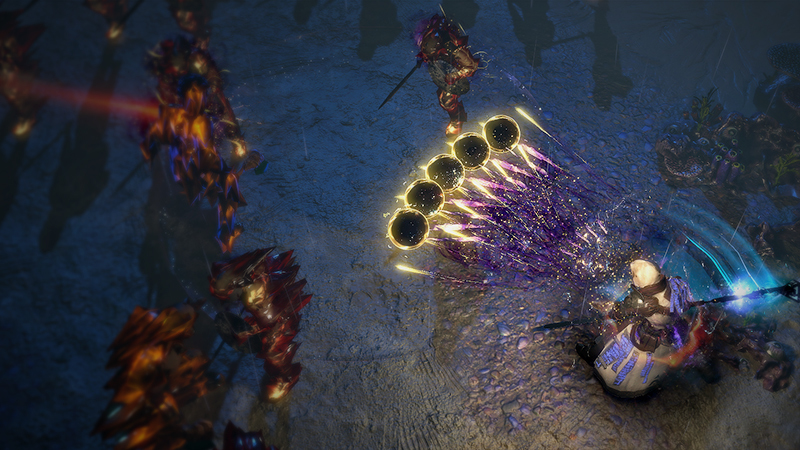 Then I heard the phrase “The environment determines consciousness”, and since then it has been the leitmotif of my life. I realized that I can control the path I take by consciously choosing those around me. In Belgrade, I had to rebuild my environment.
Then I heard the phrase “The environment determines consciousness”, and since then it has been the leitmotif of my life. I realized that I can control the path I take by consciously choosing those around me. In Belgrade, I had to rebuild my environment.
Every day I met new people in search of “my own”. At the same time, I was looking for those with whom I could rent a house together: living alone is boring and expensive. I am an extrovert and love to be around a lot of different interesting people. I found two guys with whom we rented a big house in the center of Belgrade. I call what we have achieved co-living — it differs from joint rent in that its participants do not so much want to save money, but rather strive to live more fun and interesting. Not to say that we are very friendly — after all, we are very different in age, lifestyle, and interests. But we easily agree on everything and make each other’s life more interesting. We divide the rent in proportion to square meters, and the bills — equally.
Our house has three bedrooms according to the number of residents and one huge room, which I decided not to inhabit, but to use for events. In Belgrade, I really missed tactile parties (cuddle parties) — meetings where people hug, get simple human warmth and a dose of oxytocin (especially needed in our difficult times) with it. I got acquainted with this format in Moscow a couple of months before my departure. I missed those bursts of energy with which I left such parties. This was not the case in Belgrade, and I decided to organize them myself. At the moment I have already done 4 caddles, but this is not the main thing.
The most amazing thing is that during these few months around coliving I have gathered a community of people with whom it is easy, fun and interesting to be together. Initially, with such a community, I solved the problem of finding a company in Belgrade for any of my requests — from “going to the cinema” to “crying in a vest”. But then it turned out that all the people who gathered at the core of the community are united by several rare qualities: honesty with themselves and others, exploration of themselves and an interest in the depth and quality of communication. And the most valuable thing we have, and what distinguishes us from the numerous communities that have formed in Belgrade from the evacuees, is transparency and the opportunity to be ourselves. In practice, this means the following: if one of the members of the community has some “uncomfortable” feelings towards me — irritation or aggression — it is not only possible, but also welcome, to tell me about them (in a non-violent form). After all, only in this way can I be sure that I am dealing with a real person, and not with a social mask, and only in such an interaction can we all be ourselves.
And the most valuable thing we have, and what distinguishes us from the numerous communities that have formed in Belgrade from the evacuees, is transparency and the opportunity to be ourselves. In practice, this means the following: if one of the members of the community has some “uncomfortable” feelings towards me — irritation or aggression — it is not only possible, but also welcome, to tell me about them (in a non-violent form). After all, only in this way can I be sure that I am dealing with a real person, and not with a social mask, and only in such an interaction can we all be ourselves.
It is impossible to overestimate the importance of an environment in which we can communicate without social masks, and we are accepted for who we are. During the 4 months that this community has existed, each of us has gone through tremendous personal growth precisely thanks to being among those with whom you can discuss everything that worries you and get support. We all see great value in the quality of communication that we have developed.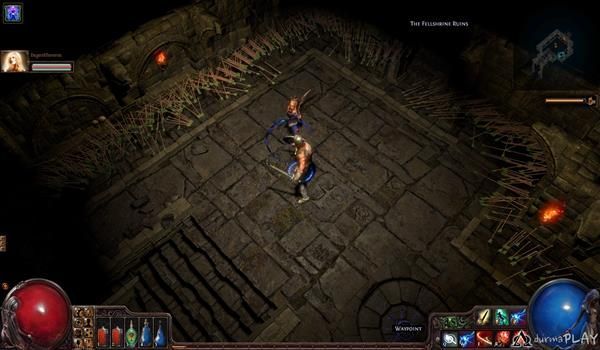 We often get together and spend time together in my co-living — playing board games and games for deep communication, brainstorming, generating ideas and helping each other move towards our goals, having cooking evenings and hugging parties. Sometimes we go on joint trips and retreats. In these joint activities, we get great pleasure from communicating with each other and in general — from life. Now this group of people is practically my family. So far there are about a dozen of us, but I believe that I can increase the number of people in our company without sacrificing quality.
We often get together and spend time together in my co-living — playing board games and games for deep communication, brainstorming, generating ideas and helping each other move towards our goals, having cooking evenings and hugging parties. Sometimes we go on joint trips and retreats. In these joint activities, we get great pleasure from communicating with each other and in general — from life. Now this group of people is practically my family. So far there are about a dozen of us, but I believe that I can increase the number of people in our company without sacrificing quality.
Since this community is the result of my conscious efforts, I realized that I could pass on the knowledge of how to build quality relationships to other people. Together with the guys from the community, we are doing joint projects about contact with ourselves and other people — these are the things that support each of us in turbulent times. With my friend Olya, we launched an online course where we share with those who wish the practices and techniques that helped us find this contact ourselves. With my friend Vanya, we are developing a sex-positive community where you can explore your sexuality in an accepting environment without fear of judgment. The plans include projects about finding friends in a new place and about the ability to enjoy life in the little things that surround us. So far, we are doing all these projects in Russian for the Russian-speaking population, but when we get used to the Serbian language and cultural code, we will also do cross-cultural Serbian-Russian events.
With my friend Vanya, we are developing a sex-positive community where you can explore your sexuality in an accepting environment without fear of judgment. The plans include projects about finding friends in a new place and about the ability to enjoy life in the little things that surround us. So far, we are doing all these projects in Russian for the Russian-speaking population, but when we get used to the Serbian language and cultural code, we will also do cross-cultural Serbian-Russian events.
Serbs are an amazingly warm people, with a very understandable mentality for Russians and the same idea of friendship. I have already made several close friends-Serbs, who received me very warmly in their country. I introduce them to my Russian friends and take great pleasure in seeing how their quality of life increases in this interaction. I like to feel my involvement in increasing the amount of good, if not all over the world, then at least in a small Belgrade.
I’m unlikely to ever return to Russia — in Serbia I already have a new life, which I build the way I want, in accordance with my desires and values.

I will hardly ever return to Russia — in Serbia I already have a new life, which I build the way I want, in accordance with my desires and values. It was here that I found its meaning, which fills me. It is in Belgrade that I wake up every day and feel that I breathe deeply and live my real life — I have never had such a feeling in Moscow. And I am happy that in these circumstances I ended up in Serbia, even though Russia is supported here. I see that the Serbs are more anti-NATO than pro-Putin, so I treat this support as ignorance, not aggression.
In Moscow, I have the only close friend who cannot leave for financial reasons, and he is my only reason to worry about what is happening there. I no longer feel almost any connection with Russia. Now those Russians with whom I am on the same path ideologically are a decentralized community scattered across different countries. Most of my relatives are bombarded with propaganda and I have no desire to keep in touch with them.
